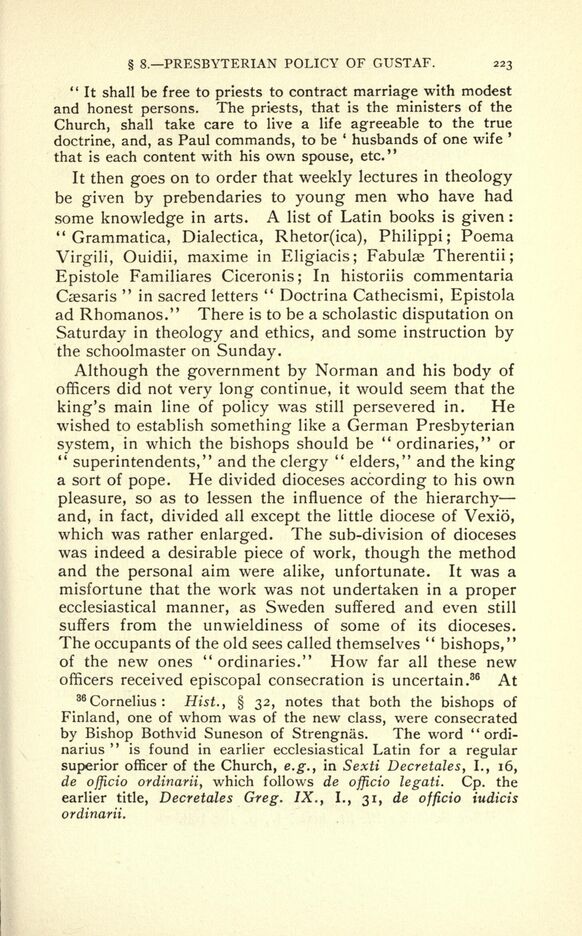
Full resolution (JPEG) - On this page / på denna sida - V. The Swedish Reformation under Gustaf Vasa and his sons Eric and John (1520—1592 A.D.)

<< prev. page << föreg. sida << >> nästa sida >> next page >>
Below is the raw OCR text
from the above scanned image.
Do you see an error? Proofread the page now!
Här nedan syns maskintolkade texten från faksimilbilden ovan.
Ser du något fel? Korrekturläs sidan nu!
This page has never been proofread. / Denna sida har aldrig korrekturlästs.
8. PRESBYTERIAN POLICY OF GUSTAF. 223
"
It shall be free to priests to contract marriage with modest
and honest persons. The priests, that is the ministers of the
Church, shall take care to live a life agreeable to the true
doctrine, and, as Paul commands, to be *
husbands of one wife
J
that is each content with his own spouse, etc."
It then goes on to order that weekly lectures in theology
be given by prebendaries to young men who have had
some knowledge in arts. A list of Latin books is given :
"
Grammatica, Dialectica, Rhetor(ica), Philippi ;
Poema
Virgili, Ouidii, maxime in Eligiacis; Fabulag Therentii ;
Epistole Familiares Ciceronis; In historiis commentaria
Caesaris
"
in sacred letters
"
Doctrina Cathecismi, Epistola
ad Rhomanos." There is to be a scholastic disputation on
Saturday in theology and ethics, and some instruction by
the schoolmaster on Sunday.
Although the government by Norman and his body of
officers did not very long continue, it would seem that the
king s main line of policy was still persevered in. He
wished to establish something like a German Presbyterian
system, in which the bishops should be
"
ordinaries," or
"
superintendents," and the clergy
"
elders," and the king
a sort of pope. He divided dioceses according to his own
pleasure, so as to lessen the influence of the hierarchy
and, in fact, divided all except the little diocese of Vexio,
which was rather enlarged. The sub-division of dioceses
was indeed a desirable piece of work, though the method
and the personal aim were alike, unfortunate. It was a
misfortune that the work was not undertaken in a proper
ecclesiastical manner, as Sweden suffered and even still
suffers from the unwieldiness of some of its dioceses.
The occupants of the old sees called themselves
<< prev. page << föreg. sida << >> nästa sida >> next page >>